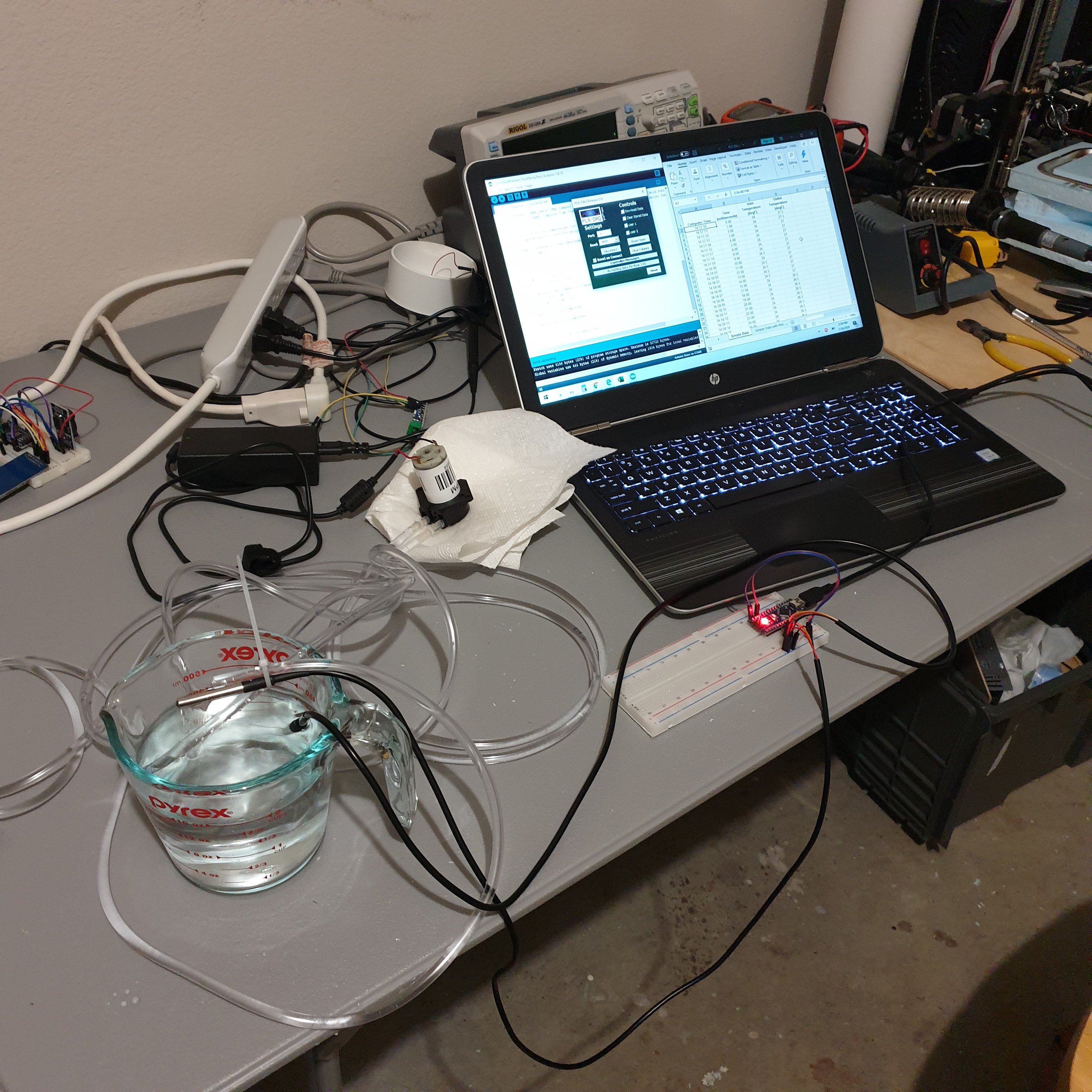
I recently developed the test setup for measuring the fluid temperature rise through the OpenFluidWarmer prototype. A peristaltic pump, typically used for aquarium dosing, pumps fluid through the tubing at a rate of approximately 65ml/min. Two DS18B20 measure fluid temperature at the inlet and outlet of the tubing. An Arduino Nano captures the temperature data from both sensors and sends the data through serial to the computer. I use the PLX-DAQ macro spreadsheet to pull the serial data directly into Microsoft Excel. Once in Excel, it is very easy to manipulate and plot the data.
The actual testing will include several differences that I did not think were needed to ensure proper operation of the test equipment and instrumentation. The pump will draw fluid from an ice bath. This will ensure a constant fluid inlet temperature and approximate the 4degC initial temperature typical of blood products. An ambient temperature sensor will be added to keep record of environmental temperatures between tests. In addition, the system will be allowed to achieve a thermal steady state condition over a period of ten minutes.
This test cuts corners for convenience and is not necessarily representative of how the OpenFluidWarmer would perform with actual blood products. The density and thermal capacity of water is different from whole blood and packaged red blood cells. Hardware store vinyl tubing is used instead of medical grade IV tubing. The pumping action of the peristaltic pump may add a small fluid temperature rise. The inlet temperature will be at 0degC rather than the 4degC typical of the initial temperature of blood products. So the purpose of this test is not to determine with great accuracy if the current OpenFluidWarmer can meet the fluid warming requirements, but whether it is reasonable to think that it could. If not, options are to either accept lower performance or go back to the drawing board.
 John Opsahl
John Opsahl
Discussions
Become a Hackaday.io Member
Create an account to leave a comment. Already have an account? Log In.